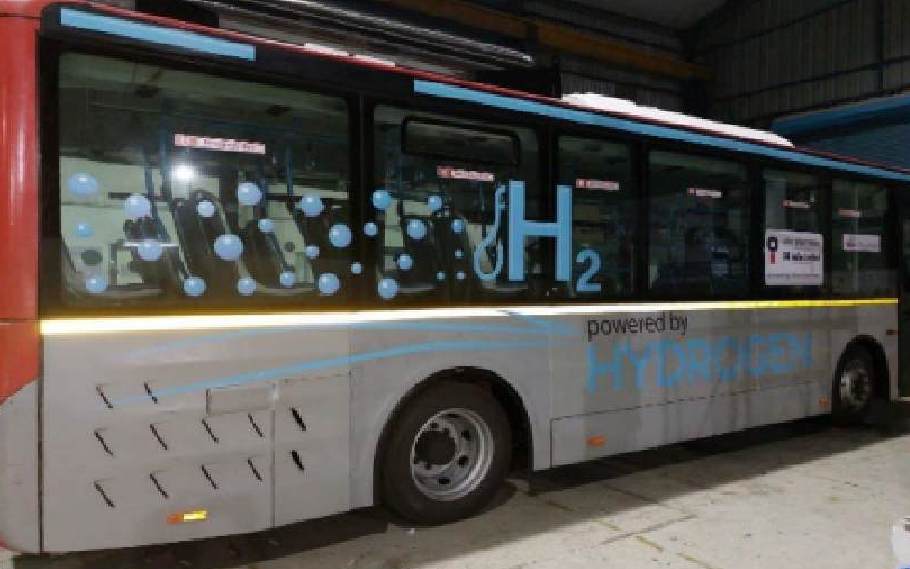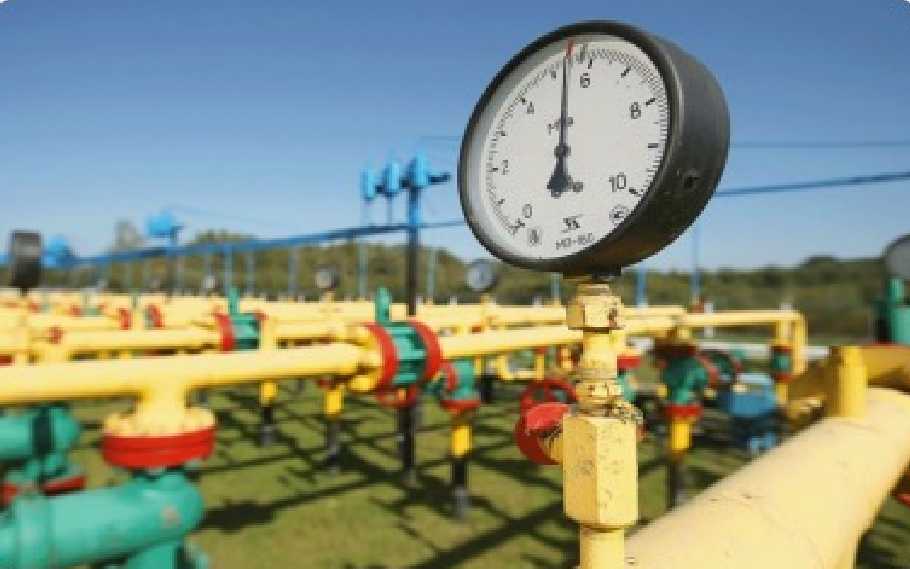Spread the love
The current year 2022 has seen Oil India Limited (OIL) investing big in Green Hydrogen. And Assam finds itself at the forefront of the energy major’s mission to pursue the net zero emission target.
In April this year, OIL commissioned India’s first 99.999 percent pure Green Hydrogen pilot plant, with an installed capacity of 10 kg per day at its Jorhat Pump Station in Assam, a significant first step towards a Green Hydrogen Economy in India. A 100 kW Anion Exchange Membrane (AEM) Electrolyser array is the main equipment for the production of the ‘Green’ hydrogen as it uses power generated from a 500kW Solar power plant to break water into Hydrogen and Oxygen. Notably, the use of AEM technology is also a first in India. OIL has already spent Rs. 9 crore on the pilot plant. The plant is expected to increase its production of Green Hydrogen to 30 kg per day in the future.
The company has initiated a detailed study in collaboration with IIT Guwahati on the blending of Green Hydrogen with natural gas and its effect on the existing infrastructure of OIL. It also plans to study cases for commercial applications of the blended fuel.

The state-owned energy major has also completed a beta demonstration of its hydrogen-powered bus developed by Ohm Cleantech under its Start-up programme, SNEH. It is a 9-meter bus powered by a60kW PEM Fuel Cell engine for electric drive. The novel bus will give a minimum range of 450 km and emit mere water in the exhaust. The Jorhat Pump would be supplying the Green hydrogen required to run the bus. The bus is expected to be deployed for Green Kaziranga Tourism by the end of 2022.
The ongoing climate change is a result of excessive greenhouse gas emissions (mainly CO2) that have been let out into the atmosphere over the last two centuries. This excessive emission is dominantly a result of the society’s over dependence on fossil fuels (coal, oil, gas) for all-activities –from ‘generation of electricity' to ‘manufacturing of products’, to ‘transportation’.
Fossil fuels emit greenhouse gases, which when burned stay locked in the atmosphere for several decades, intensifying global warming. Thus, greater the emission of greenhouse gases into the atmosphere, the greater the extent of global warming, and hence the worse the extent of climate destabilisation.
India is presently the third largest emitter in the world. India’s carbon dioxide (CO2) emissions are growing at a faster rate than in any other major energy-consuming nation. Emissions from India accounted for 7 percent of the global CO2 burden in 2018, compared with the US’s 14 percent.
But India has committed to becoming a net-zero carbon nation by the year 2070 in the COP26 Summit, in addition to achieving aggressive near term targets such as 500 GW of renewable capacity, 50 percent of requirements to be met with renewables, one billion tonnes reduction in cumulative emissions by 2030, and 45 percent reduction in the emissions intensity of its gross domestic product (GDP) by 2030.
As such India is prioritizing Green Hydrogen as a potential solution to decarbonize hard-to-abate sectors such as refinery, ammonia, methanol, iron and steel, and heavy-duty trucking. Adoption of Green Hydrogen can enable India to abate 3.6 giga tonnes of CO2 emissions cumulatively between now and 2050.
Hydrogen is the lightest and most abundant element in the universe. Yet it is rarely found in nature in its elemental form and requires extraction from other hydrogen-containing compounds. Depending on the amount of carbon emission while splitting the Hydrogen compounds, the H2 produced is classified into various colours.
Presently, hydrogen is produced in India on an industrial scale predominantly by splitting methane (CH4) into CO2 and H2, or from coal which emits significantly higher CO2 per unit of hydrogen produced. Due to the high amount of CO2 emission, it is either called Grey/ Brown/Black Hydrogen.
But when the CO2 released during the hydrogen split is captured and stored, thus resulting in reduced emissions, then it is called Blue Hydrogen.
Green Hydrogen is the cleanest energy form. Here oxygen and hydrogen are separated from water (H2O) by subjecting it to electric current through a process called electrolysis. The carbon intensity of the electrolysis depends on the carbon neutrality of the source of electricity mainly electricity produced from solar or wind energy.
While 95 percent of the H2 produced in India is Grey Hydrogen, Green H2 accounted for a measly 0.03 percent in 2020.
As per Oil India Limited, "Energy is a USD 5 trillion opportunity."
30-35 percent replacement by Green H2 in key use cases like ammonia, refining, and CGD (city gas distribution) could reduce Liquified Natural Gas (LNG) imports worth USD 4.2 billion per annum while also serving India’s need for energy security.
Localization and EPC (Engineering, procurement, and construction) of Green H2 projects could create a new approx. USD 25-27 billion green technology market in India. Additionally, it would give opportunities to create global and regional hubs for export manufacturing and EPC services.
Furthermore, OIL sees this as an opportunity to create additional GW scale demand for renewable energy and an attractive value addition opportunity for developers.
OIL has identified three focus areas to develop the Climate Shield that would contribute to India's mission to achieve net zero emission by 2070.
The prices of Green Hydrogen are determined largely by the cost of electrolysers and electricity. Beyond that, there are the operating costs, transmission and distribution costs, and wheeling charges for electricity as well as specific local duties and taxes like GST. The cost of hydrogen from electrolysis today is relatively high, between USD 4.10 to USD 7 per kg depending on the various technology choices and the associated soft costs. This makes it hard to compete with the existing cost of grey or brown hydrogen.

However, India has some of the most competitive Levelized costs of electricity (LCOE) for solar and wind in the world. Given the promises of electrolyser cost and LCOE decline, it is more beneficial to expand Green H2 production in India
rather than the production of grey or blue H2.
NITI Aayog estimates that India’s own internal market for electrolysers could be around USD 31 billion by 2050 representing a demand of 226 GW. By 2030, India can expect a demand of 20 GW.
As such OIL proposes to promote Make in India and Atmanirbhar Vision; creating a Global Electrolyser company to captivate the growing consumption needs of India by 2030. Given very few domestic manufacturers, an enterprise
catering to both domestic needs and exports market has the potential to grow into a billion dollar business.
Prasanta Borkakoty, Resident Chief Executive of OIL said to Business Northeast, "India is well placed to capture Green H2 tech opportunities in the dominance of a single country. A strategic opening can lead India to be a global supplier."
"We are already a low-cost manufacturing hub with the potential to achieve a 15 to 20 percent reduction in electrolyser costs. This is feasible as approximately 60 percent of the overall system cost from commonly used electric devices such as
rectifiers, transformers, etc., are already manufactured in India for consumption across multiple sectors," he added.
Oil India Limited envisages building India's First NetZero enabler Navratna with strategic investment in Electrolyser manufacturing facility and in water technologies like rainwater harvesting and water purification.
The energy giant will also invest in Power to X and create expertise and a portfolio of making e Fuels from CO2 and H2O Co-Electrolysis like methanol, green ammonia, and SAF. Additionally, OIL will provide round-the-clock net zero solutions with blended PNG for homes and industry, and promote the use of Fuel Cell CHP technology in tea gardens.
Water is the key ingredient for the production of Green Hydrogen. Water is a scarce resource and the electrolyser needs Demineralised water.
“The North East of India being well-poised for water required for the electrolysis process has the potential to play a spoiler role in the Green Hydrogen pathway. With rainwater harvesting and water purification in the region and rainwater harvesting and water purification, the North East region has the opportunity to be the energy export hub in the near future,” said Borkakoty.
The North East has the potential to produce about 40 GW of Green Hydrogen. Of this 28 GW is from solar, 2 GW from water, less than 1 GW from coal and wind each, and 8 GW from stored energy.
ALSO READ: BRAHMAPUTRA INFRASTRUCTURE LIMITED BAGS ORDERS WORTH RS. 177.45